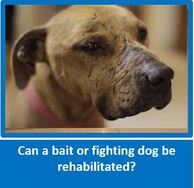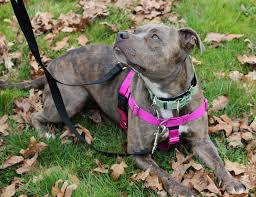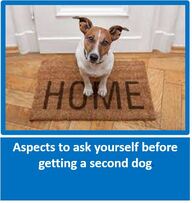
Upset stomachs, itchy skin and other uncomfortable symptoms are often a result of your pet being sensitive to the food or environments it is coming into contact with. These allergic reactions are one of the main reasons people take their pets to the vet. Our allergy test was designed as a cost effective easy-to-use pet sensitivity test to help you find out what may be affecting the health of your beloved pet.
The test was developed to measure the highest level of accuracy, approximately 100 of the most commonly known allergens that your pet may be reacting to. We test foods and environmental factors and you will also find out which popular supplements and every-day household products your pet may be allergic to. www.muttmix.co.za
The test was developed to measure the highest level of accuracy, approximately 100 of the most commonly known allergens that your pet may be reacting to. We test foods and environmental factors and you will also find out which popular supplements and every-day household products your pet may be allergic to. www.muttmix.co.za

Before we talk further about this topic, it is interesting to note that historically, fighting dogs were physically conditioned for fighting, by exercise, walking, pulling heavy objects, use of a human treadmill, in order to build stamina and strength – the use of bait dogs was not included in the training.
What is also surprising is that historically, when training a young dog destined for fighting, it was put in with a more experienced dog where it would gain experience, and the fights were stopped before either dog was seriously injured.
Looks like in the days gone by that even though a horrendous ‘sport’, there was more concern over the dogs than today!
Bait or Fighting Dog?
The odds are that if a dog is rescued from a fighting environment, unless one has first-hand knowledge as to what was occurring, you really don’t know if the dog was used for bait or for fighting.
Not all dogs engaged in dogfighting are rescued from raids – dogs are often found abandoned on the side of the road, or in the veld – it has come to the end of its use as either a bait or fighting dog, may have lost a fight, and has been dumped to die. It is the condition the dog is in, that is an indicator as to whether this dog was used in fighting or not more often than not.
Whether the dog was a bait or fighting dog, many of them can be rehabilitated and end up in loving homes and have a brand-new start at life - however, this normally means a huge amount of work, total consistency, and working at a pace the dog can cope with - to go into trying to rehabilitate a dog such as this, without the correct knowledge and tools to undertake this work, can have serious consequences, even the end of the dog's life.

.Assessment
Before any thought of a new home can be considered, each and every dog, should undergo a standard evaluation program to assess its suitability. This would include things such as being handled by strangers, seeing if any fear behaviour present in new locations, situations etc, dog’s reaction to toys, especially if they pounce on soft toys and attempt to destroy them, if it resource guard’s food or toys, meeting a doll that mimics a baby, seeing children close by (behind a fence for safety, its reaction to other dogs etc. This evaluation process can give a good indication as to whether the dog can be worked with in order to be adopted.
The trouble with tests such as above, is that they are done soon after the dog has arrived at the place of safety, and often the dog is in such a stressed state, it may not exhibit any aggressive tendencies – these may only start to show up after a few weeks when the dog is feeling more secure. Very similar to the ‘honeymoon’ period found in shelter dogs, wherein, during the first 3 weeks or so in a new home, the dog either does not exhibit behaviours that resulted in them being sent to a shelter, or, these behaviours were exhibited at a very low level and frequency.
Dogs that do not pass the assessment test due to exhibiting extreme aggression towards people or other dogs, would not be put up for adoption and would have to be euthanized. We need to bear in mind that it is the actual dog that is assessed – the dog is not assessed according to breed.
A good number of the dogs that are rescued are reactive to other dogs, and it is not unusual for them to be fearful of humans and even totally shut down and depressed, although there are multiple stories of these dogs, showing instant trust and loyalty to their rescuers. I guess it is just a case as to what punishment and harsh treatment the dog endured before being rescued.
What kind of behaviours is a Bait/Fighting dog likely to exhibit?
In an article I came across by Dr. Karen Becker, discussing bait and fighting dogs, she says :-
“Recently a team at Best Friends Animal Society in Kanab, Utah published the results of a study of the behaviors and psychology of dogs that have been abused. As you might guess or already assume, there are indeed differences between abused dogs and “normal” dogs.
How Dogs Were Selected for the Study on Abuse
The research team identified abused dogs for the study using a multi-step process. First, they notified Best Friends magazine recipients that they were looking for owners of dogs who suspected their pet had been abused. They received over 1,100 responses, and each respondent was given a link to an online survey to complete.
Of the completed surveys, 149 were chosen based on the researchers’ assessment that the dogs involved were more likely than not to have been abused.
The next step was to give five experts the histories and physical reports of injuries of the 149 dogs. After evaluating each dog, if four of the five experts concluded the dog had probably been abused, the animal was included in the study. This final step narrowed the field to 69 dogs.
The guardians of the 69 dogs then had to complete a highly detailed survey called the Canine Behavioral Assessment and Research Questionnaire (C-BARQ). The questionnaire is designed to measure a number of different canine behavioral characteristics, and is considered by many to be the gold standard research tool for the study of dog behavior.
The 69 study dogs were compared with over 5,000 dogs in the C-BARQ database that were similar in age, the age they were acquired by their current owners, and their living situation at the time they were acquired.
Abused Dogs Have a Greater Tendency to Perform Certain Behaviors
According to the researchers, the dogs in the study displayed higher levels of 12 behavioral characteristics, 8 of which are known to be among the most common reasons people relinquish their dogs to animal shelters.
These 8 traits and behaviors include:
Before any thought of a new home can be considered, each and every dog, should undergo a standard evaluation program to assess its suitability. This would include things such as being handled by strangers, seeing if any fear behaviour present in new locations, situations etc, dog’s reaction to toys, especially if they pounce on soft toys and attempt to destroy them, if it resource guard’s food or toys, meeting a doll that mimics a baby, seeing children close by (behind a fence for safety, its reaction to other dogs etc. This evaluation process can give a good indication as to whether the dog can be worked with in order to be adopted.
The trouble with tests such as above, is that they are done soon after the dog has arrived at the place of safety, and often the dog is in such a stressed state, it may not exhibit any aggressive tendencies – these may only start to show up after a few weeks when the dog is feeling more secure. Very similar to the ‘honeymoon’ period found in shelter dogs, wherein, during the first 3 weeks or so in a new home, the dog either does not exhibit behaviours that resulted in them being sent to a shelter, or, these behaviours were exhibited at a very low level and frequency.
Dogs that do not pass the assessment test due to exhibiting extreme aggression towards people or other dogs, would not be put up for adoption and would have to be euthanized. We need to bear in mind that it is the actual dog that is assessed – the dog is not assessed according to breed.
A good number of the dogs that are rescued are reactive to other dogs, and it is not unusual for them to be fearful of humans and even totally shut down and depressed, although there are multiple stories of these dogs, showing instant trust and loyalty to their rescuers. I guess it is just a case as to what punishment and harsh treatment the dog endured before being rescued.
What kind of behaviours is a Bait/Fighting dog likely to exhibit?
In an article I came across by Dr. Karen Becker, discussing bait and fighting dogs, she says :-
“Recently a team at Best Friends Animal Society in Kanab, Utah published the results of a study of the behaviors and psychology of dogs that have been abused. As you might guess or already assume, there are indeed differences between abused dogs and “normal” dogs.
How Dogs Were Selected for the Study on Abuse
The research team identified abused dogs for the study using a multi-step process. First, they notified Best Friends magazine recipients that they were looking for owners of dogs who suspected their pet had been abused. They received over 1,100 responses, and each respondent was given a link to an online survey to complete.
Of the completed surveys, 149 were chosen based on the researchers’ assessment that the dogs involved were more likely than not to have been abused.
The next step was to give five experts the histories and physical reports of injuries of the 149 dogs. After evaluating each dog, if four of the five experts concluded the dog had probably been abused, the animal was included in the study. This final step narrowed the field to 69 dogs.
The guardians of the 69 dogs then had to complete a highly detailed survey called the Canine Behavioral Assessment and Research Questionnaire (C-BARQ). The questionnaire is designed to measure a number of different canine behavioral characteristics, and is considered by many to be the gold standard research tool for the study of dog behavior.
The 69 study dogs were compared with over 5,000 dogs in the C-BARQ database that were similar in age, the age they were acquired by their current owners, and their living situation at the time they were acquired.
Abused Dogs Have a Greater Tendency to Perform Certain Behaviors
According to the researchers, the dogs in the study displayed higher levels of 12 behavioral characteristics, 8 of which are known to be among the most common reasons people relinquish their dogs to animal shelters.
These 8 traits and behaviors include:
- Excitability
- Fearful on stairs
- Attachment, attention-seeking
- Hyperactivity
- Rolling in feces
- Persistent barking
- Fear and aggression toward strange people and dogs
- Bizarre, strange, or repetitive behaviors such as hoarding, digging deep holes, compulsive sucking on pillows, and circling “

Working with a Bait / Fighting dog
This is not something to be taken lightly under any circumstances, and should only be considered if there are no other dogs in the home. About 98% of aggressive behaviour is fear based, and bearing in mind what the dog could have been through, having another dog in the home, would not be helpful, and could even be dangerous for the existing dog, as one of the first instincts of a dog is to react with aggression if it felt threatened.
A dog such as this comes with challenges and it is up to the person/people working with these dogs, to work at a pace the dog can cope with, be totally consistent, and ensure that they have the skill and knowledge that is required for the task. These dogs have already been through so much, that it is simply not an option for the person/people working with them, to fail the dogs, either by a lack of commitment, lack of time, or lack of knowledge – the dog deserves better! To fail in an undertaking such as this could well set the dog right back, and even result in euthanasia.
If you do not have the knowledge and still want to be involved with rehabilitating a dog like this, then it is crucial that you work with an accredited behaviour consultant with a good knowledge of dog’s body language, to guide you. As we find that Tellington TTouch is such a major tool in helping with fear and aggression issues, this is a tool that should be considered as well.
Helping a dog such as this, as above, takes a huge amount of work, patience and time, as one has to work ‘where the dog is at’, however it is more than worth the effort – you are helping to change a life and to see the positive results and the dog slowly improving, is heart warming and incredibly gratifying.
What would be involved in the rehabilitation process?
What one also needs to be aware of, is that dogs that have suffered abuse or are fearful, may progress slightly, then take a backward step. This is just part of the process and one needs to be patient and never, under any circumstances, push a dog such as this.
Once the dog starts to feel more secure in the home environment, then, in conjunction with a behaviourist, a program such as below may be followed. This is similar to one that we used with 2 Husky dogs that belonged to one of our students (Zeus and Apollo). These dogs had both been used as bait dogs and were petrified of humans (even her husband) and could not tolerate being around any other dogs.
On first working with these dogs, the closest other dogs could come to them was about 500m and if a human approached, they would turn and run in absolute panic. Using a similar program to below, their wonderful person helped these two lovely animals to not only tolerate other dogs close to them – they actually started to make a few dogs friends, and realize that humans were wonderful to be around.
This whole process took us about 6 months from starting, and at no stage did we push the dogs out of their comfort zone. This was a huge amount of work and commitment, and their owner did an amazing job.
An outline of what was done: -
Finally, we believe that what is also a very important point is to bear in mind how forgiving and resilient dogs can be, and how they can learn to trust again and be wonderful family pets. For all of you working with these dogs, we salute the work you do and your patience and commitment and let's all keep our eyes and ears open to possible fighting, and keep our own dogs safe.
This is not something to be taken lightly under any circumstances, and should only be considered if there are no other dogs in the home. About 98% of aggressive behaviour is fear based, and bearing in mind what the dog could have been through, having another dog in the home, would not be helpful, and could even be dangerous for the existing dog, as one of the first instincts of a dog is to react with aggression if it felt threatened.
A dog such as this comes with challenges and it is up to the person/people working with these dogs, to work at a pace the dog can cope with, be totally consistent, and ensure that they have the skill and knowledge that is required for the task. These dogs have already been through so much, that it is simply not an option for the person/people working with them, to fail the dogs, either by a lack of commitment, lack of time, or lack of knowledge – the dog deserves better! To fail in an undertaking such as this could well set the dog right back, and even result in euthanasia.
If you do not have the knowledge and still want to be involved with rehabilitating a dog like this, then it is crucial that you work with an accredited behaviour consultant with a good knowledge of dog’s body language, to guide you. As we find that Tellington TTouch is such a major tool in helping with fear and aggression issues, this is a tool that should be considered as well.
Helping a dog such as this, as above, takes a huge amount of work, patience and time, as one has to work ‘where the dog is at’, however it is more than worth the effort – you are helping to change a life and to see the positive results and the dog slowly improving, is heart warming and incredibly gratifying.
What would be involved in the rehabilitation process?
What one also needs to be aware of, is that dogs that have suffered abuse or are fearful, may progress slightly, then take a backward step. This is just part of the process and one needs to be patient and never, under any circumstances, push a dog such as this.
Once the dog starts to feel more secure in the home environment, then, in conjunction with a behaviourist, a program such as below may be followed. This is similar to one that we used with 2 Husky dogs that belonged to one of our students (Zeus and Apollo). These dogs had both been used as bait dogs and were petrified of humans (even her husband) and could not tolerate being around any other dogs.
On first working with these dogs, the closest other dogs could come to them was about 500m and if a human approached, they would turn and run in absolute panic. Using a similar program to below, their wonderful person helped these two lovely animals to not only tolerate other dogs close to them – they actually started to make a few dogs friends, and realize that humans were wonderful to be around.
This whole process took us about 6 months from starting, and at no stage did we push the dogs out of their comfort zone. This was a huge amount of work and commitment, and their owner did an amazing job.
An outline of what was done: -
- Initially, one would not do any ‘work’ with the dog apart from supplying a safe and secure environment where the dog would start to feel secure. There is no time limit here, however, you should not try to do any more until the dog is totally comfortable with its new people, and in the house and garden. As the dogs were already comfortable in the home environment, this did not have to be done with Zeus and Apollo.
- Don’t ‘label’ these dogs or feel sorry for them – the past is just that – the past. The dog has ended up in a place where it can be helped, where it can have a brand-new start at life – forget the past and don't label the dog - this really does hold it back and keeps the memory of its past in place.
- We have found that shouting can really upset them, so try to keep tone of voice normal around these dogs and be aware that raised voices, or arguments can have a negative effect and may have the dog scuttling away in fear.
- As soon as possible, get started with TTouch, and either one of the FOTD Dog Behaviour Sprays such as Rescue Dog or Extreme Anxiety. We would also suggest putting a dog onto a balanced, species-appropriate diet. Do this under the supervision of your vet, as you may find that the dog would be better with 3 or 4 smaller meals during the day.
- If the dog shows fear behaviour, be there for the dog, but do not pander to the behaviour by trying to comfort touching it, as we would to another human. This would only make the dog think that you too, were fearful! Rather, divert the dog’s attention onto something else and remain upbeat yourself.
- Depending on the degree of aggression, the dog may have to be desensitized to a Baskerville Ultra Muzzle before meeting new people and being taken for walks.
- Introducing the dog to new people that visit the home – only when the dog is ready. Some of these dogs can be extremely fearful of people and this can manifest as aggression, so this must be done very slowly and carefully, and under the tutelage of a behaviourist or somebody with the necessary knowledge. This is a very important step, as we are starting the process of teaching the dog that humans are now great to be around, as they reward the dog with wonderful treats. This should be done slowly with each new person meeting the dog a few times, and not bringing in another new person, until the dog is totally comfortable. Most often, this procedure starts with females as the likely hood of abuse in the fighting environment, would have, most probably been from men.
- We suggest getting these dogs onto stuffed chew toys such as Kong’s, Busy Buddies as soon as possible. Chewing helps a dog to de-stress and additionally this would supply some entertainment. Here one would have to be very careful that resource guarding of objects, especially food related chew toys, was not occurring.
- Start to build up the dog’s confidence, by engaging in ball games in the garden, some games involving scenting for treats that have been hidden, Snuffle Mats, and you can even build a very small and easy agility course – here we are not trying to make the dog into an agility dog, rather looking for ways that we could build confidence, such as going over and under objects, walking over different substances etc. This is very similar to The Playground of Higher Learning, or Groundwork, that is used in TTouch.
- If the dog was not used to a collar and lead, then in the home, and later, in the garden, get the dog used to walking on lead, in a fun and positive manner.
- Starting to take the dog out for short, daily walks. This would have to be done in an area where there were no other dogs. We suggest driving the dog to a large shopping centre with a large parking area such as the large shopping centres, where there are unlikely to be other dogs and if the dog was fearful of people, it could be walked far enough away. This will help to build up the dog’s confidence and also supply both mental and physical stimulation.
- Once the dog was more settled, then your behaviourist may well bring in other behaviour modifications to make the dog feel more secure, such as House Rules, and other positive training methods to increase confidence.
- The final step would be to bring in the necessary modifications such as desensitizing and counter conditioning, and exercises in order to help the dog accept other dogs in its space – we are not asking the dog to make friends with other dogs – rather just to be able to see another dog or walk past another dog without aggression.
Finally, we believe that what is also a very important point is to bear in mind how forgiving and resilient dogs can be, and how they can learn to trust again and be wonderful family pets. For all of you working with these dogs, we salute the work you do and your patience and commitment and let's all keep our eyes and ears open to possible fighting, and keep our own dogs safe.




